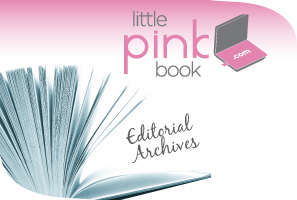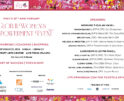
Media Kits 101

Here’s how to create buzz for your business with a well-made media kit.
By Melanie Rembrandt
Do you have a media kit – a print or online package of information that provides reporters (and maybe even potential clients) all background information and data on your company? If not, you may be missing out on media mentions, as busy reporters often move on to other sources when they are on deadline and can’t get your information quickly and easily.
High-quality, printed media kits are used for important conferences, trade shows and media mailings – and vary in price. “Depending on the size, quantity and elements involved, professional printing of a media kit can range from a couple of hundred dollars to several thousand,” says Jessica Cooper, marketing manager at PrintingForLess.com, an e-commerce company that helps small businesses with their printing needs. “But you can develop a stunning, professional media kit at an affordable price by using a combination of professionally printed letterhead and your office printer – and then you can customize and update it frequently.”
But also consider creating an online version so media can access the data 24/7. Plus, this allows you to refer people to your site – and save time and money in printing and shipping fees. “With our online media kit, we were able to refer reporters to my bio and all of our press clips quickly and easily and secure several television interviews,” says Tara-Nicholle Nelson, author of The Savvy Woman’s Homebuying Handbook (Prosperity Way Press, 2007) and founder of {RE}Think Real Estate.
What Information Goes into a Media Kit?
Think of your media kit as a snapshot of your business – and be intuitive about key points reporters might want to know if profiling your company.
With this in mind, most media kits include the following information:
Business facts. This is a brief synopsis about what your company does and why you are unique. It includes your company’s mission statement, goals, work environment, competitive advantage (what you offer that your competitors do not) and other pertinent data (such as demographics, where applicable, and revenues, if you share them). Present this information in a few paragraphs, as detailed bulleted points or in a “Frequently Asked Questions” format. Keep it succinct, and only convey the important bits of information.
Products and services. This section includes a list of all the products and services you offer, focusing on the benefits of each. Why should people care about what you provide? What’s in it for them? And what will it cost them?
Backgrounds. This should briefly summarize the history of your business: Who founded the company, why and when? You can also include any really big events or interesting changes that have happened along the way.
Bios. Here you may want to include brief, reader-friendly biographies of key members of the team – especially founders and senior management. Include information about past work experience, education, awards or recognition, expertise, board or committee involvement, family information and other key points you want the media to know about. Consider including a high-resolution, downloadable photo of each business leader so that media members can easily access them.
News. Here you can include your archived list of press releases, media mentions, articles about your company, testimonials, videos, webinars, case studies, speaking engagements, upcoming events and other newsworthy activities.
Melanie Rembrandt is an experienced publicist and author of 7 Simple Steps to Startup PR Success. She helps entrepreneurs increase awareness and sales via her business, Rembrandt Communications®, free newsletter and blog.
Recommended
-
Fall 2024 EventNovember 19th, 2024
-
REGISTER HERE FOR THE UPCOMING...September 19th, 2024
-
Spring Sales Are Ready To Bloo...March 1st, 2024
-
Two Months Away!August 24th, 2023
-
Pink’s Signature Spring ...May 17th, 2023















